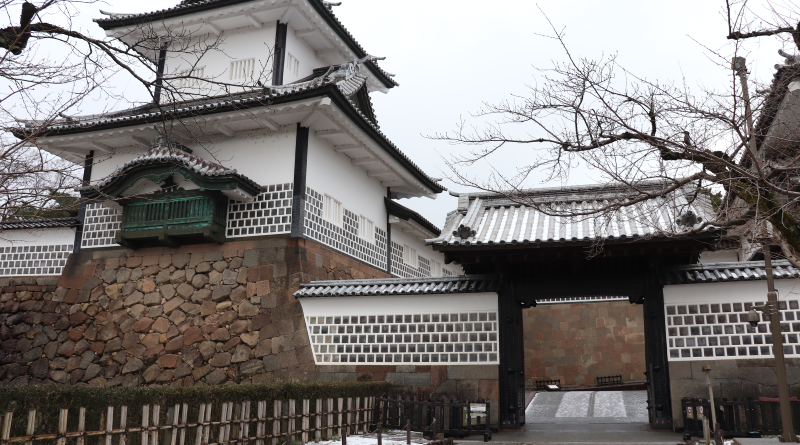
Kanazawa Castle
The biggest city in the Hokuriku Region is the golden city of Kanazawa. Filled with unique culture and rich history, Kanzawa attracts people not only from Osaka but also from Tokyo. Thanks to the efficient Thunderbird and Hokuriku Shinkansen, traveling to Kanazawa is a breeze. Centered in the heart of the city’s historic center is Kanazawa Castle, which was once the seat of power for over two centuries. Today, the castle stands as a testament to the city’s past and welcomes scores of guests every year who are eager to explore its grandeur and rich history.
About Kanazawa Castle
Kanazawa Castle sits on the former site of Oyama Gobo, built by the Honganji monks (also called Ikkoshu) who took over the Hokuriku Region with farmers and self-governed the region for a century. After Oda Nobunaga defeated the Honganji monks, his subordinate, Sakuma Morimasa, built the castle in 1580.
In 1583, the infamous samurai, Maeda Toshiie, moved to Kanazawa, and the Maeda clan governed Kaga Province (present-day Toyama and Ishikawa) for over 14 generations.
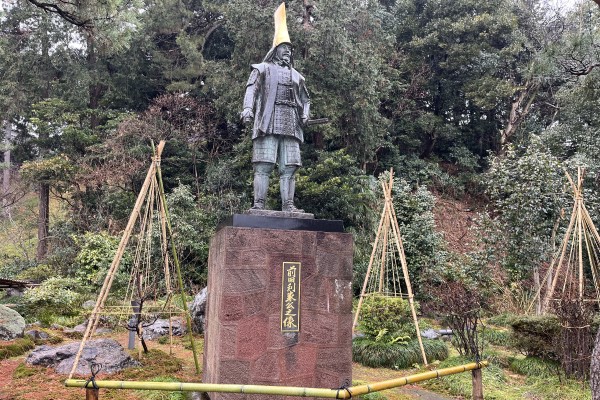
Kanazawa, or Kaga in old Japanese, refers to “Kaga Hyakumangoku” under the Kokudaka system. This system is an old Japanese land value system for taxation that measures how much rice an area could produce in a year, with one koku roughly enough to hire one person. This means Kanazawa produced a million people’s worth of food a year — second only to the capital, Edo.
Kanazawa Castle Park
Kanazawa Castle is 15-20 minutes away from Kanazawa Station or maybe 10 minutes by bus. Around the castle is the Korinbo district. In addition to the castle, here you will also find Kenrokuen Garden–one of the top three most famous Japanese gardens. There are also lots of shops and restaurants in Korinbo, so there is plenty to explore.
When we visited the castle, it was snowy and windy— we even heard some occasional thunder. This weird winter weather is called burikoshi in Kanzawa, which means “a wakeup call for yellowtail”, which is commonly enjoyed in the Hokuriku Region in the winter.
Ishikawamon Gate
The most iconic of Kanazawa Castle is the Ishikawamon Gate. The gate dates from the Edo period and is very beautiful, especially after a light snowfall at the castle or during the height of the plum blossom season.
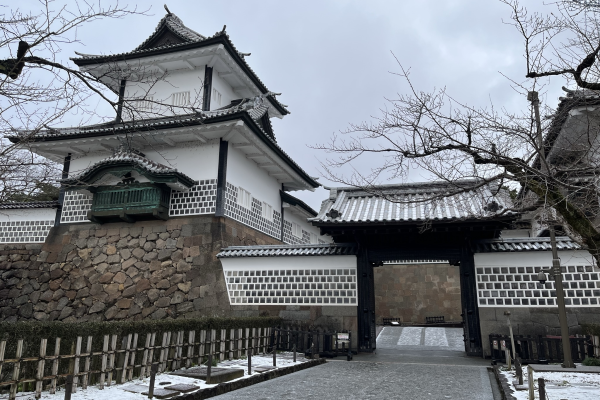
“Ishikawa” refers to the nearby Tedorigawa River, which is also where the name for the prefecture, Ishikawa, is derived from.
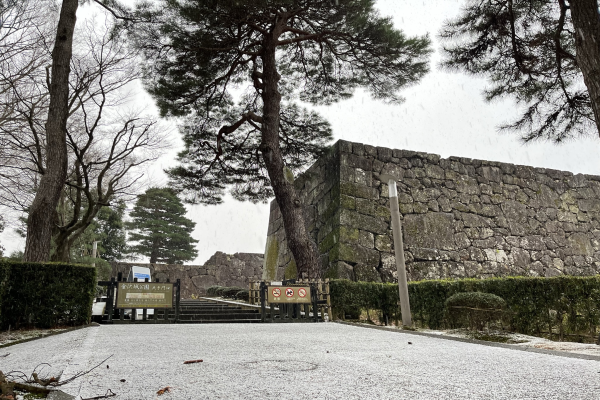
The interesting thing is that Ishikawamon is not the main entrance to Kanazawa Castle. The main entrance, Otemon, is a bit far away from Ishikawamon. Additionally, there are no turrets or gates left at Otemon and it is also far away from Kenrokuen Garden—so few spend much time, if any, here at all.
Sannomaru
After Ishikawamon Gate is Sannomaru where you can find another icon of Kanazawa Castle, Gojyukken Nagaya.
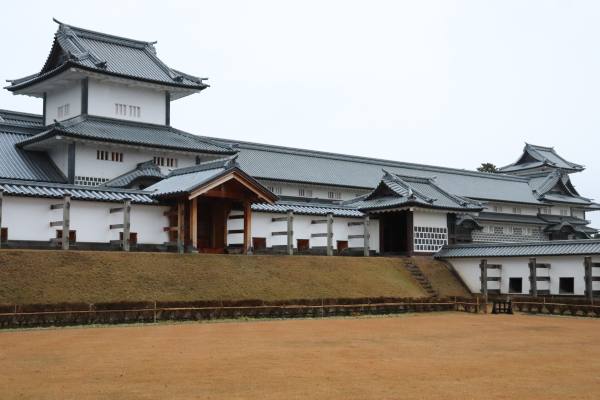
Gojyukken Nagaya is the long turret that connects the Hashizumemon and Hishiyagura turrets.
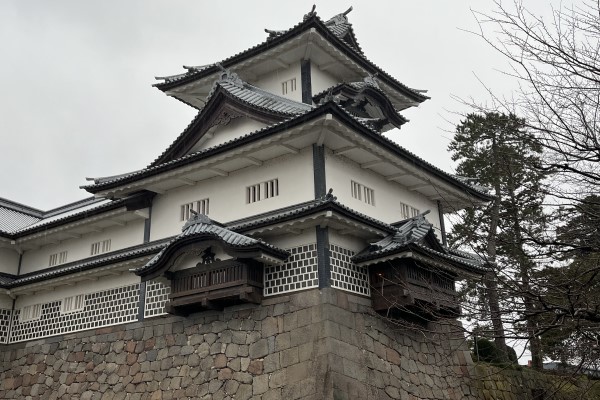
Though all the turrets at the castle grounds are reconstructions, this means not only can you go inside them, but they have some modern comforts. Namely, the turrets have AC/ heaters so on hot or snowy days they are great places to take a break and learn some of the details about the castle.
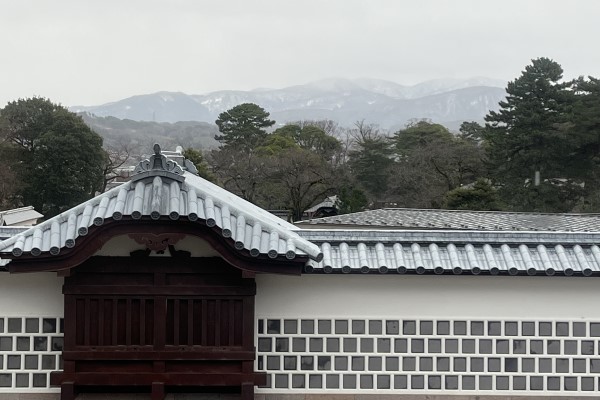
Ninomaru
After passing through Hashizumemon Gate, you’ll reach Ninomaru, which used to be the location of Ninomaru Goten. Unfortunately, the main keep of Kanazawa Castle was destroyed by fire in 1602 and was never rebuilt. It is possible that the keep was filled with gold and valuable local lacquerware, which Kanazawa is renowned for, but we have no way of knowing for sure. Since the keep was destroyed, Ninomaru Goten was used as the new “castle”.
However, even Ninomaru Goten was burnt down during the Meiji period. One of the few remains of Ninomaru Goten is Tomon Gate, which can be found in Oyama Shrine.
They are currently considering reconstructing Ninomaru Goten.
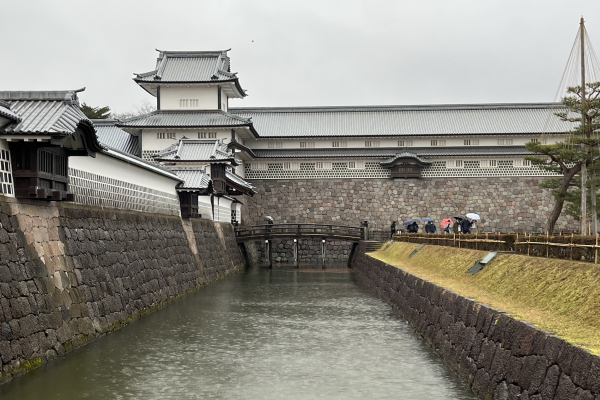
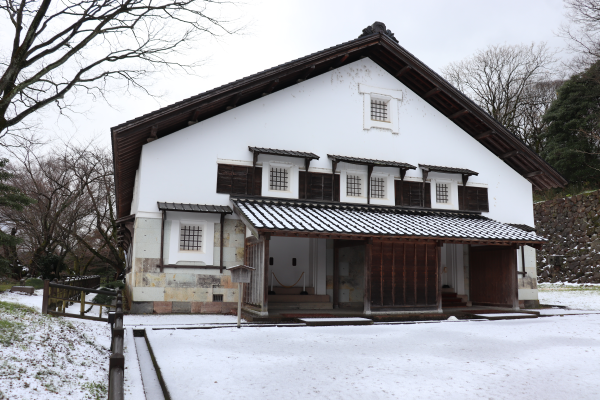
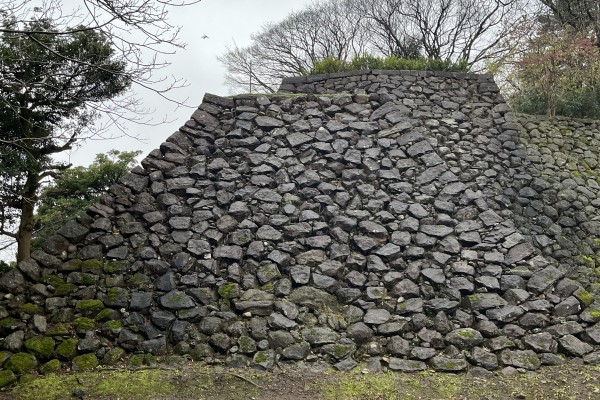
The castle walls of Kanazawa Castle consist of local stones from Mt. Iou.
Kanazawa Castle’s Meiji Period Military Buildings
During the Meiji Period, the military set up occupation in the castle. After WWII, it became a campus for Kanazawa University and some of those buildings remain today.

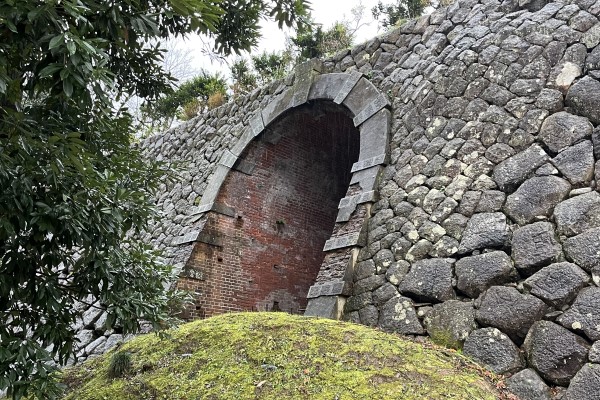
Gyokuseninmaru Garden
Maeda Toshitsune, the third lord of Kaga Prefecture, in 1634. If you come in winter, you can see umbrella-shaped objects around the trees. Those are called yukizuri and are only found in Kanazawa. Those prevent snow from piling up on the trees and damage them.
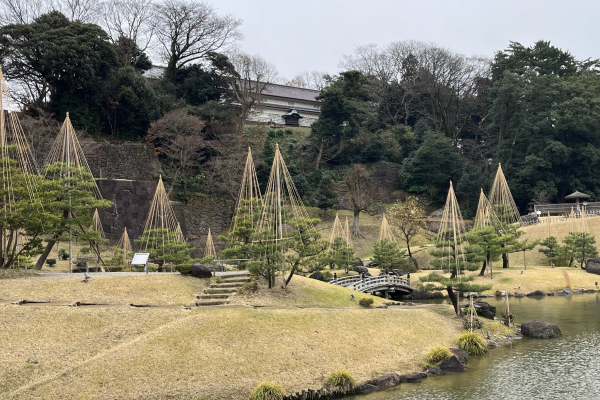
From Kanazawa Castle, it is possible to go to Oyama Shrine and the Korinbo District through Gyokuseninmaru Garden.
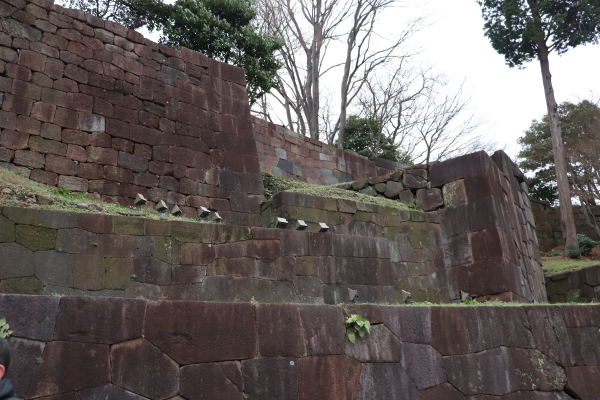
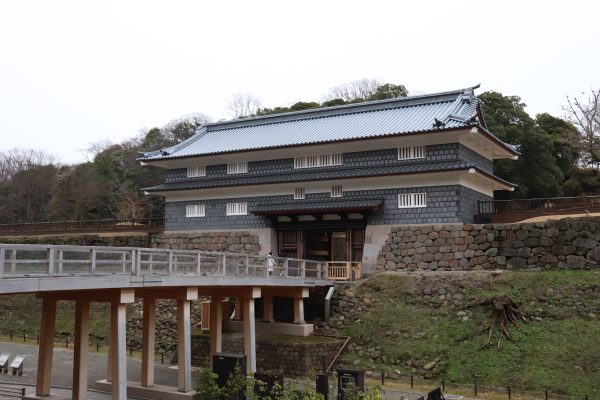
After Nezumitamon Gate you will soon find your way to Oyama Shrine, as well as the Korinbo District.
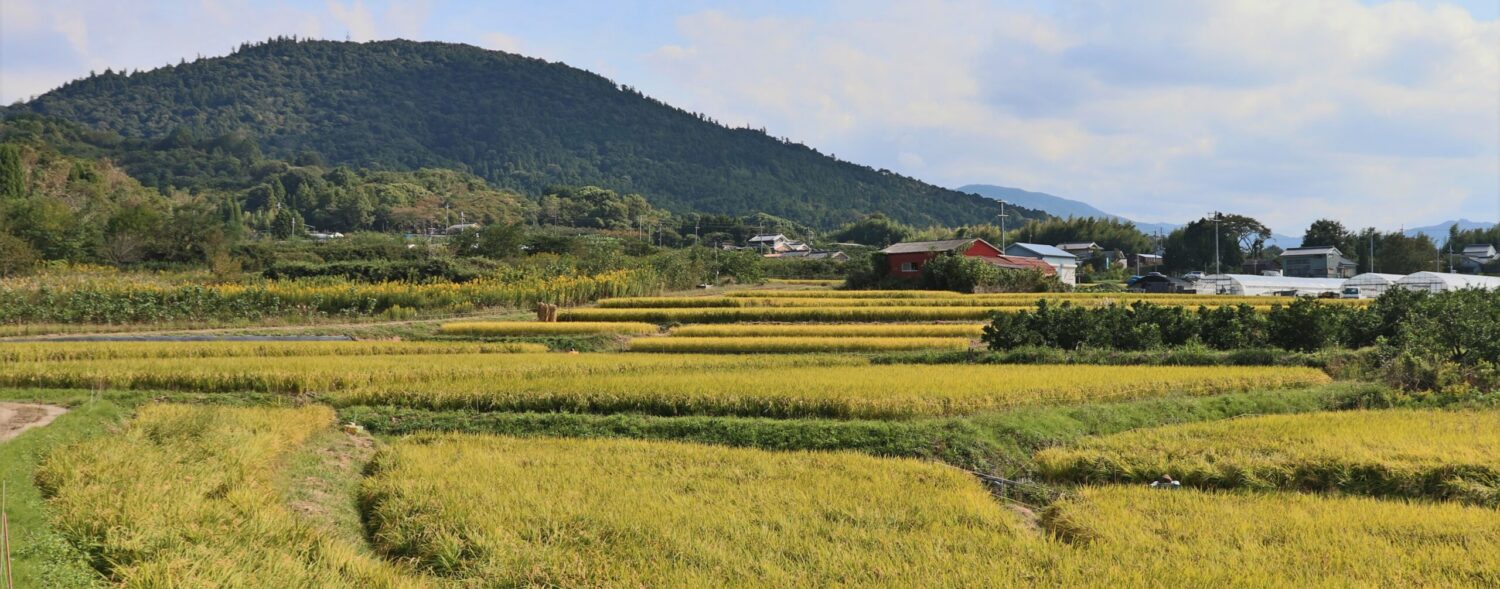
Leave a Reply